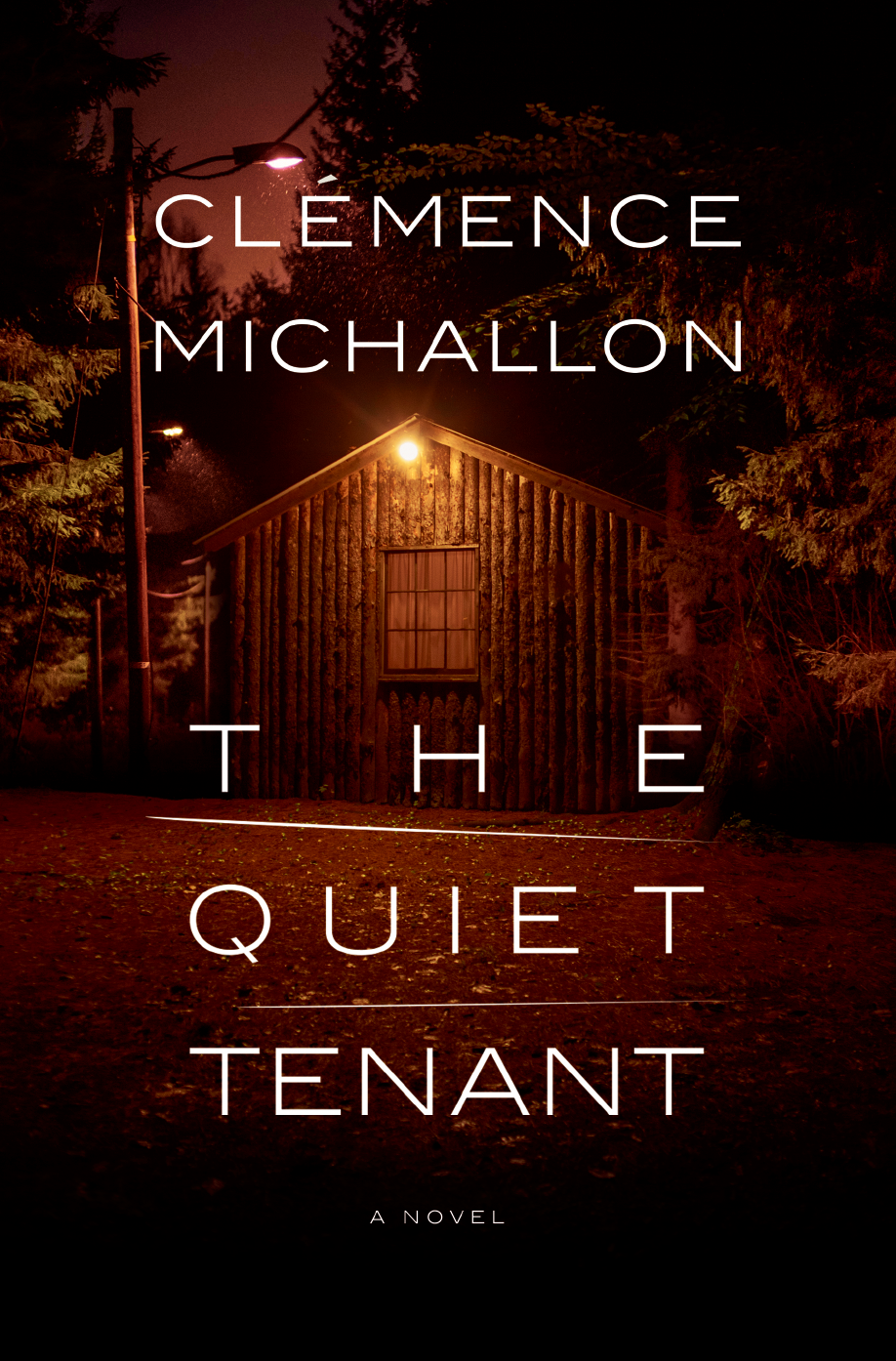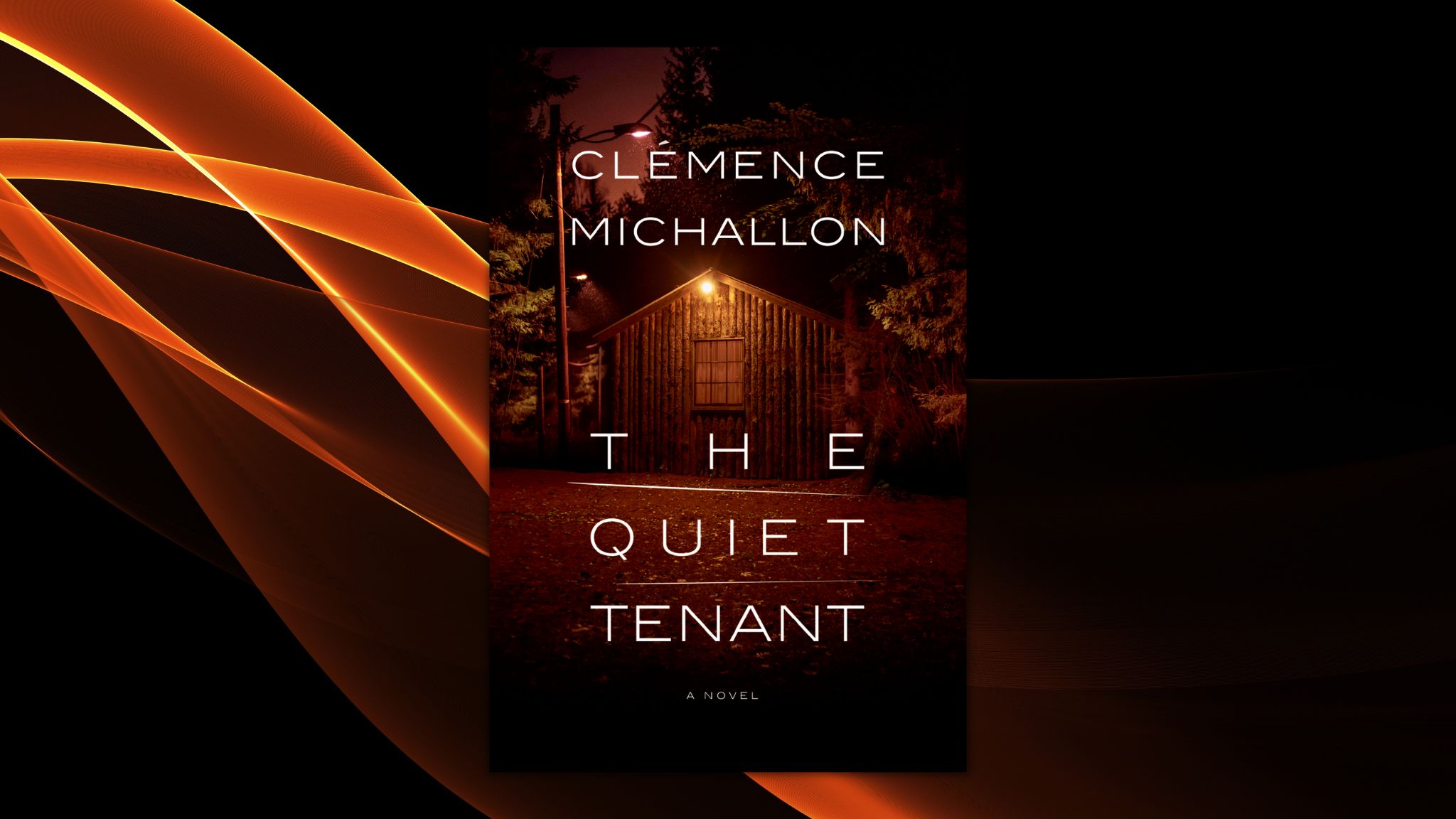The Quiet Tenant by Clemence Michallon
What’s it About?
A pulse-pounding psychological thriller about a serial killer narrated by those closest to him.
He told me about her before we moved. A friend of a friend of a friend is what he said. Whatever…I wasn’t dying to make friends with some random woman anyway. But that wouldn’t have been nice. And my dad, he’s a nice person.
No, he’s not.
The girl speaking in Clémence Michallon’s The Quiet Tenant is thirteen-year-old Cecilia Thomas, and the woman she’s talking about is named Rachel and she’s renting a room in their new house. What Cecilia doesn’t know: the woman’s name isn’t Rachel and she’s not there by choice.
You became Rachel. You have been Rachel for years. She has kept you alive. You have kept you alive.
For five years, Rachel’s been a prisoner of Cecilia’s father, Aidan, first in a shed behind the old house, now here. He’s killed eight women already; eventually, he’ll kill Rachel, too. But not just yet.
Rule number one of staying alive in the shed: He always wins. For five years, you have made sure of it.
Right now, he’s busy making friends with Emily, the restaurant owner who’s clearly taken a shine to him. He has to make sure to maintain his image, that of everyone’s favorite handyman and general good guy around town. Cecilia will never know anything about any of this. Everything is right on schedule.
Just not in the way that he thinks. Cecilia is an intelligent girl, curious about this new houseguest. Emily has been through the wars already, and has decided it’s time to take a little initiative. And Rachel – Rachel has just been watching. And waiting.
Tonight, there are things you know with certainty. What he’s done, and to whom. Where he keeps his spare gun….What he doesn’t realize: that you know, now, that the world isn’t just a place where things happen to you. That you can happen to the world too.
Told completely through the voices of these three women, plus, briefly, those of his other victims, The Quiet Tenant is a tour de force of suspense and character, of shifting power dynamics and the will to survive. The term “psychological thriller” is used a lot these days – I promise you have never read one quite like this.
“I started working on The Quiet Tenant in April 2020,” says Michallon. “I spent this heightened, strange time living in a house in the Hudson Valley with my husband and his parents.
“Since we were family, we all knew what everyone did for a living. But then, rather suddenly, we were home with each other all day long. That meant we got to see, on a granular level, how everyone spent their time (you know where this is going…).
“It got me thinking: what if someone had a dark secret they had been able to conceal from their family because they were gone during the day? And what if that distance were suddenly threatened?
“I workshopped that idea with my husband, and that’s how I came to the character of Aidan, a serial killer who keeps one of his victims captive in a garden shed. At the beginning of the novel, Aidan must move from a big property to a smaller house, bringing not only his captive but his teenage daughter, who doesn’t know about his crimes (the threat of proximity). His worlds aren’t just colliding — they’re meshing with each other.
“I started writing The Quiet Tenant from one point of view — that of the captive victim – from the very beginning. What better person to tell this man’s story than the one who had observed and survived him for five years?
That made sense to me.
“But it was slightly limiting because Aidan victimizes other people. There are the women he kills, of course, but also his loved ones and family. Everyone he lies to is a victim. One evening, walking my dog, I was struck by an idea: what if, in addition to his captive, I told this story from the point of view of a woman who only sees his seemingly perfect façade? And what if she had a crush on him and wanted to get closer to him?
“I wasn’t sure this would work. So I spoke to a friend who is also a writer, and she convinced me to try it. I never looked back. The voices grew louder from there: if we were hearing from these two women, we also had to hear from Aidan’s daughter. And then, I decided we needed to hear from all of Aidan’s victims. The story came alive with a female chorus. Each of them brought together a piece of the puzzle. Only by hearing from the women in aggregate could I tell this story in full.” Michallon had many influences in the writing of this book. The first was her parents:
“I was a teenager when my mother told me about Ted Bundy, who — in her recollection — attacked young college students. She wasn’t necessarily trying to warn me off a specific evil, I think she was just making conversation (thanks, mom!) I kept this knowledge in my brain but managed to go on with my life forgetting about serial killers. But then I would remember they did exist and go on long Wikipedia binges about them.
That’s my late adolescence and early adulthood in a nutshell (all mom’s influence).
“My dad, on the other hand, has always been spooked by stories of crime and troubled by cruelty. When the topic would come up, he would ask why. Why did we care about Ted Bundy? Why did we want to know about him and men like him? For years, this was an impossible question to answer. I kept mulling it over until, in my late twenties, I realized: that the question only holds up if you approach it with the assumption that cruelty isn’t interesting or that our morality should prevent us from caring. But I think we obsess over things we can’t understand. I started asking him why. Why wouldn’t we care about these stories of anomalous behavior that force us to look at the limits of human nature?
“My parents essentially workshopped the matter of serial killers with me for years, so I supposed I should credit them for my work on this novel! And it’s true; I was prepared when I started writing The Quiet Tenant.”
The second influence came from her work as a journalist – a French woman based in New York City for a British newspaper, The Independent. “I’ve read true crime stories since my late teens, so it was a natural step to write about the genre in my work as a journalist. My reporting has undoubtedly informed my knowledge of serial killers and how they exist. However, I have always been careful to separate the stories I report on from the ones I make up on the page. I make sure my fiction brain and my journalism brain communicate only as much as strictly necessary.
“Having said that, I must credit the recent output of true crime for changing how I think about criminals. There has been a movement in the genre lately to shift our attention away from perpetrators and redirect it more toward the victims. That certainly shaped the storytelling in The Quiet Tenant.
“When it came to building the character of Aidan, having knowledge of true crime helped. I wanted him to feel rooted in reality but also unique. I didn’t want readers to look at him and think, ‘Oh, he’s meant to be so and so.’
“I studied a few cases and noticed some patterns. Several of the serial killers I knew about had military backgrounds, so Aidan became a Marine. On the other hand, a few of them had problems with alcohol, so I made him sober. The encyclopedia of true crime in my brain guided my choices in that way.
“As for something that surprised me, it was the change in how I thought about serial killers and their psyches. I used to buy into the myth of the cunning psychopath much more than I do now. Because if you look at enough of these stories and look at them closely, you’ll see that a serial killer is like a plane crash: everything that can go wrong must go wrong to create one.
“The journalist Sarah Marshall published an incredible piece in The Believer in 2018 called ‘The End of Evil’, about Ted Bundy and the myth of the psychopath. ‘It is difficult to see Ted Bundy as human,’ she writes at one point. ‘It is difficult even to entertain the belief that he did not need to destroy as many lives as he did, or that his own life could have been different. Believing this means believing that Ted Bundy and others who commit crimes like his are not born irreparably wrong, are not unavoidably evil, do not belong to a separate species from the rest of us.’
“That article blew my mind, and I thought about it often when I was working on The Quiet Tenant.” And the third influence came from her fellow writers:
“It started with Megan Abbott. I had been writing for years when I found her work, but I didn’t fully grasp what I wanted to do or how I would try to do it. Then, I opened The Fever… I didn’t know it was possible to write this way. Her prose was so novel to me, so exciting, and just so beautiful. And the stories she told, the ways she wrote about being a teenage girl and a woman—I felt like I had waited my whole life to read those stories. It sounds dramatic because it was! I felt like the ground had split open under my feet.
“I wasn’t too sure what to do with this epiphany. But in time, being a fan of her work and identifying what was so powerful about it helped me clarify my intentions as a writer. “I must also credit my mom and her endless stack of Mary Higgins Clark paperbacks for ushering me onto the road to crime fiction. (One of those novels is repeatedly mentioned in The Quiet Tenant, which is an homage.) “I’m always reading, but I read intensely while working on the novel and have vivid memories of the books I consumed during that time, including Oyinkan Braithwaite’s My Sister, the Serial Killer; Sarah Moss’s Ghost Wall; Kate Elizabeth Russell’s My Dark Vanessa; Lily King’s Writers & Lovers; Alexis Schaitkin’s Saint X; Zinzi Clemmons’ What We Lose; Daisy Johnson’s Sisters; Paul Tremblay’s Survivor Song; Alafair Burke’s The Better Sister; Rumaan Alam’s Leave the World Behind; Lucie Britsch’s Sad Janet, Hilary Leichter’s Temporary, and, on the nonfiction side, Lisa Taddeo’s Three Women; and Rachel Monroe’s Savage Appetites, a splendid book about true crime. One of her articles for The Independent in 2019 was actually about how publishing works, and that also taught her a lot: “That article was a big moment for me and helped in two ways.
“One: before I started working on my novel, I had a general understanding of the publishing process, but interviewing key players in the industry brought everything into sharper focus. Crucially, the agent and editors I spoke with helped me understand “What makes a novel stand out?” And this, too: What are publishers looking for, and what do they worry about? What goes into an acquisition? What’s the rapport between an author and their agent? What about between an author and their editor?
“And two: the agent I spoke to for this piece, Stephen Barbara at InkWell Management now represents me. I knew of Stephen because he represents my friend Corinne Sullivan, whose novel Indecent came out in 2018.
Corinne was kind enough to introduce me to Stephen for this article. When, in 2021, I finished the manuscript for The Quiet Tenant, I got back in touch with Stephen, and the rest is history. (It turns out that if you write about an agent, they might become interested in your work!)
“Completing the first draft of The Quiet Tenant was an intense experience, though. I wrote almost every day for six months. Sometimes, I wrote at a table or a desk; other times, I wrote on my phone (on the Notes app). Whenever I’m stuck in a draft, I switch to writing on my phone, which usually helps. The small screen is less intimidating (free writing tip!)
“Then I reworked that draft for another six months, during which I had long conversations with my husband where he would help me solve plot holes or reassure me that, yes, what I was writing made sense. I remember how committed I was to this novel. I also remember how terrified I was that it had a fatal flaw I had overlooked.
“After that first draft, I reworked it for six more months. Then I gave it to some friends and my husband. The evening he finished it and told me the ending had made his heart race, that felt like a victory. And it gave me hope that I had written something decent.
“When I couldn’t put it off any longer, I emailed Stephen Barbara with a query. Even though Stephen and I knew each other a bit, it was important to me to get in touch with a proper query. He read the manuscript quickly (thank you, Stephen!) and, to my immense happiness, loved the novel and offered to represent me. I still have a photo taken by my husband of me jumping up and down after that first phone call with Stephen. My eloquent words upon hanging up were: ‘Holy S**t!’
“A couple of weeks and a few changes to the manuscript later, Stephen sent the book out on submission to editors. I remember being nervous and listening to a lot of Lana Del Rey’s ‘Hope is a Dangerous Thing for Me to Have.’ But there, too, I was lucky because, after three weeks on submission, The Quiet Tenant was acquired by Knopf. My heart is racing a bit just remembering that moment. It was funny, actually—I had a couple of virtual press junket interviews lined up that day, so I had to keep a cool head while all this was happening.
“The following weeks had a few more surprises in store. Publishing houses abroad became interested in the book, and it has sold in 30 foreign markets. It hadn’t occurred to me to hope that anything like that would happen. I think all this happiness did something to my brain because that was the summer when I finally passed my road test and got my driver’s license. I felt that if I could write and publish a book in English, I could surely learn to parallel park! (I was only partly right.)” Michallon’s amazement is not unique to her. This is one of the things I love most about this business. Every year, brilliant new voices burst forward, suddenly taking us – and sometimes themselves – by surprise, and transporting us to places we’ve never been before. It’s a constant cycle of renewal, a sign that crime fiction will always continue to grow and thrive. Whether you can parallel park or not.
About the author:
CLÉMENCE MICHALLON was born and raised near Paris. She studied journalism at City University of London, received a master’s in Journalism from Columbia University, and has written for The Independent since 2018. Her essays and features have covered true-crime, celebrity culture, and literature. She moved to New York City in 2014 and recently became a US citizen. She now divides her time between New York City and Rhinebeck, NY.

Publish Date: 6/20/2023
Genre: Mystery, Suspense, Thrillers
Author: Clemence Michallon
Page Count: 320 pages
Publisher: Knopf
ISBN: 9780593534649


































